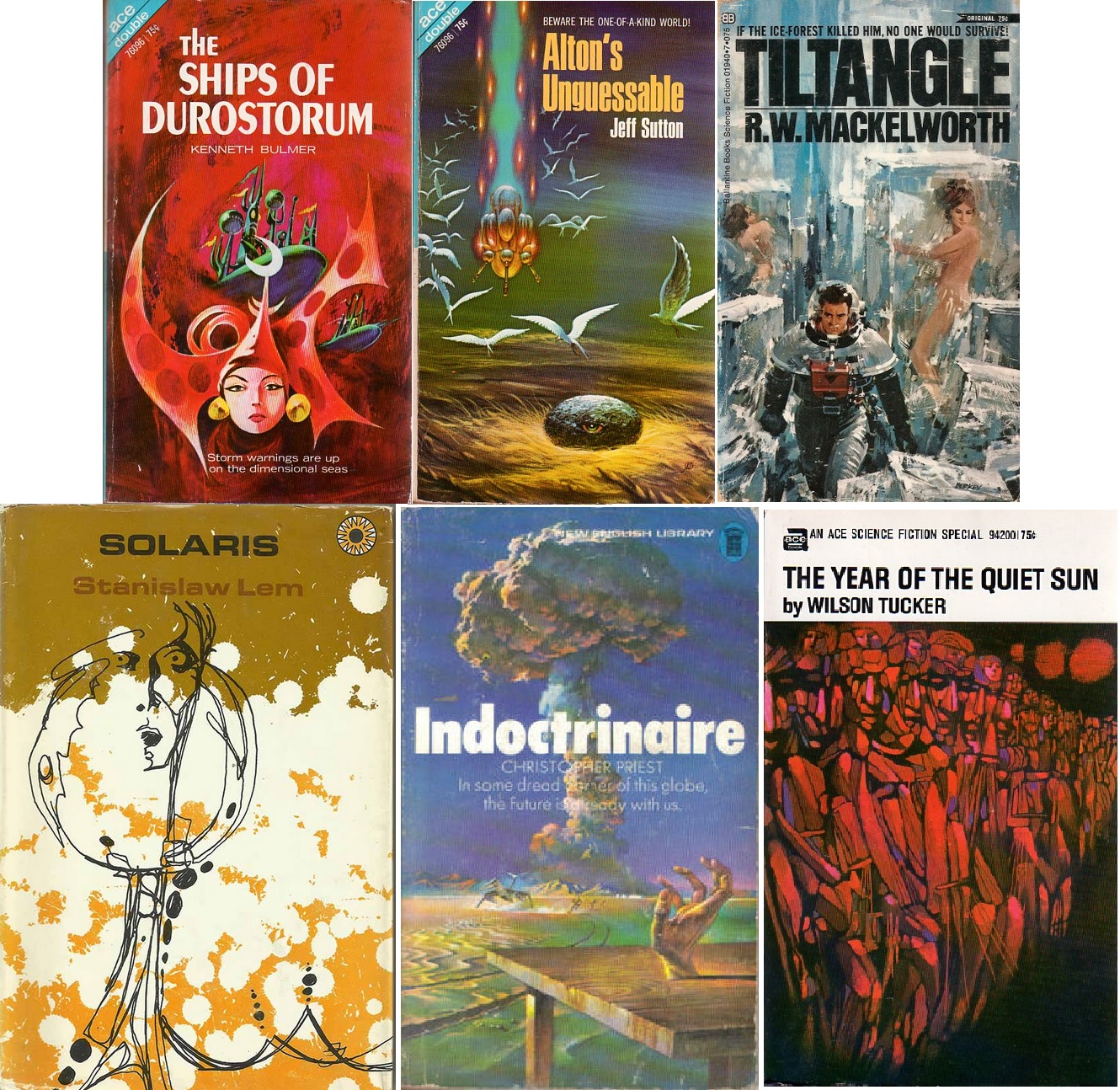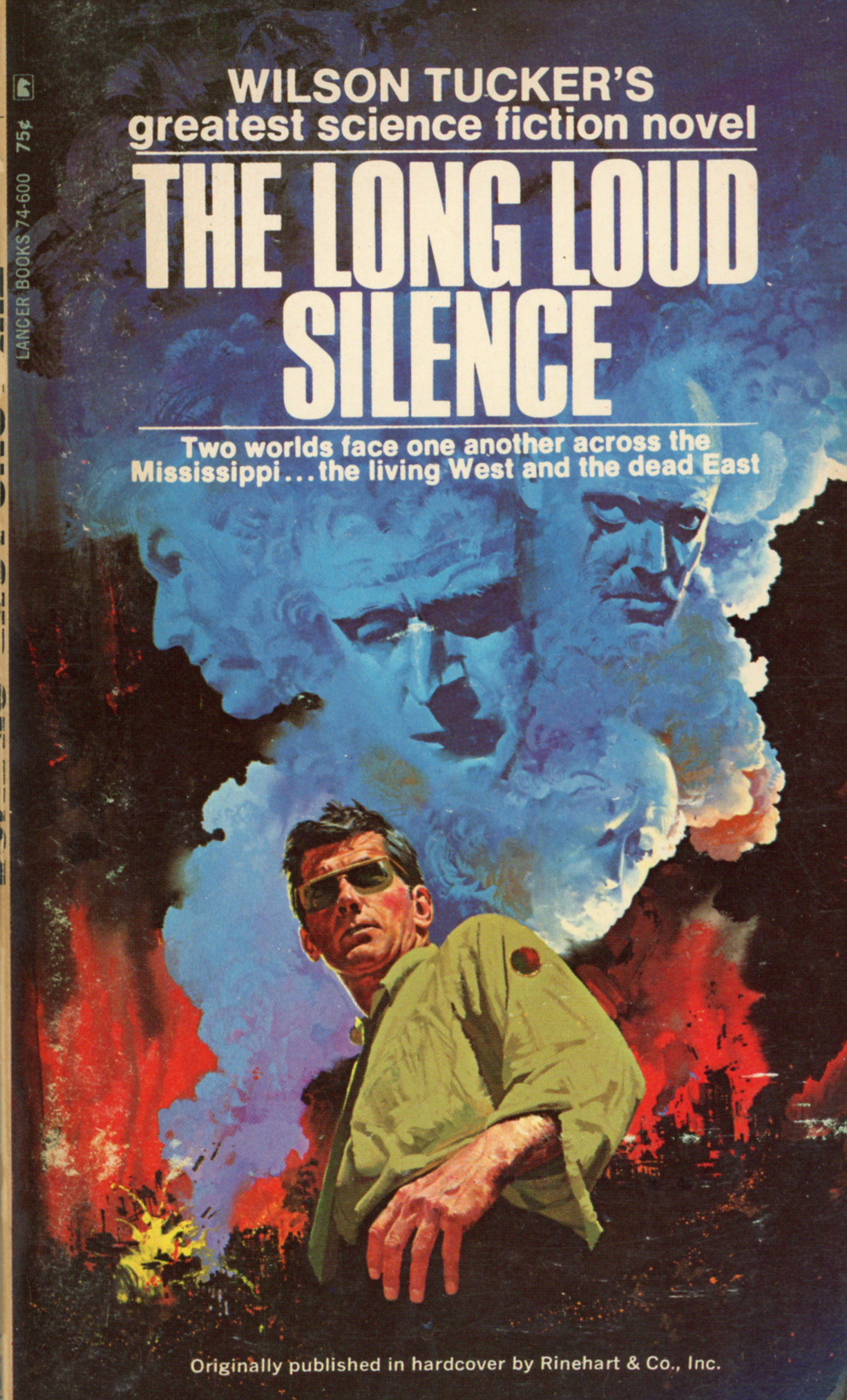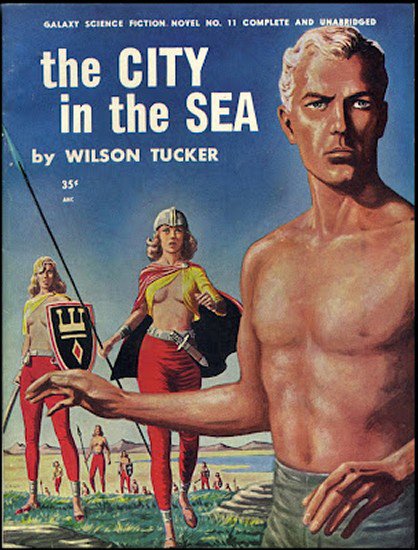
by Gideon Marcus
A tale of two missions
Mariner 4, launched November 28, 1964, is on its way to Mars. Shortly after launch, the smart folks at Jet Propulsion Laboratory (some of whom I met last weekend!) determined that Mariner was going to miss its destination by some 200,000 kilometers. So they calculated the nudge it would take to deflect the ship toward a closer rendezvous with the Red Planet. This morning, the little spacecraft was ordered to fire its onboard engines for a 20 second burn, and it now looks like Mariner will come within just 10,000 kilometers of its target!

On the other side of the world, the Soviets have informed the world that their Zond 2 probe, launched two days after Mariner 4, needs no course correction. On the other hand, on Dec. 2, it was reported that the probe is only generating half the power it's supposed to.
Similarly, in the science fiction magazine world, no fewer than three magazines got new editors this year (Fantasy and Science Fiction, Science Fantasy, and New Worlds), and two of them have the same editor with a different name (Amazing's and Fantastic's Cele Goldsmith is now Cele Lalli).
But in Fred Pohl's trinary system of Galaxy, Worlds of Tomorrow, and IF, not only is leadership unchanged, but so is content. Nowhere is that clearer than in the January 1965 issue of IF, which like its predecessors, is an uneven mix of old and new authors, old and new ideas, and generally inferior but not unpleasant work.
In other words, on course, but running on half-steam.
The Issue at Hand

by Gray Morrow
In many ways, this is not the issue Pohl wanted on the news stands. The cover doesn't illustrate any of the contents of the issue; it's supposed to go with Jack Vance's novel, The Killing Machine. But since that story ended up in book print before it could be serialized, it was pulled from appearing in the magazine. Instead, we got the sequel to Fred Pohl's and Jack Williamson's The Reefs of Space, which had the virtue of being an IF-exclusive series and co-written by the editor.
It's a good thing Pohl had it in his back pocket!
Starchild (Part 1 of 3), by Frederik Pohl and Jack Williamson

by Gray Morrow
Hundreds of years from now, the solar system is ruled by the Plan of Man, a computer-led collective in which everyone's lives are ordered, and dissent is rewarded with a quick trip to the body banks for organ harvesting. But out in the stellar outskirts, in the frigid birthplace of comets, the steady creation of matter in the universe provides rich feeding grounds for the fusorians. These cosmic plankton eaters in turn create vast reefs in space, homes to the seal-like spacelings and their predators, the dragonesque pyropods. These reefs have also become shelters for Terran dissidents yearning to be free. The Reefs of Space told the tale of their first human visitors.
Starchild is the story of Machine Major Boysie Gann, a spy sent to Polaris station to suss out traitors to the Plan. He ends up kidnapped to the Reefs and then made a messenger to the Planner, the human liaison with the Planning Machine. Mysteriously teleported back to Earth, Boysie bears with him The Writ of Liberation: if the Plan of Man does not end its attempts to subjugate the free people of the Reefs, the "Starchild" will blacken the Sun…
I was a bit chary of this serial at the beginning. Williamson is a pulp writer from the way-back, and it shows. Pohl can be brilliant, but Reefs was more pedestrian (except for the gripping middle section). But Starchild kept me going the whole way, sort of a Cordwainer Smith "Instrumentality" story, though with less poetry.
Four stars so far.
Answering Service, by Alma Hill
A Boston fan and writer, Hill is new to my ken but has apparently been published since 1950. Service shows us a world where the SPCA has won, cats and other "aggressive" animals are tolerated only in zoos, and mice are overrunning the world without check. One man is determined to reverse this situation.
Utterly forgettable. Two stars.
The Recon Man, by Wilson Tucker

by Nodel
A young man wakes up from an amnesiac coma with a push to his back out the door of a house. Onto a Heinlein moving road he goes, along with dozens of other male commuters to some mysterious labor destination. A spitfire, himself, the other drones are so many zombies. Only the pink jumpsuited women have any personality; they seem to run the show.
The man is harnessed to a machine, tasked with creating bacon by conceptualizing it so it can materialize in front of him. He soon gets bored with this role and makes neckties and carpentry tools instead. This shuts down the assembly line early, and one of the female supervisors takes him home to see what's wrong with him.
Slowly, memories of a fatal car crash, centuries before in 1960, coalesce in the man's mind. How did he get to this strange world? For what purpose? And how long does he have to live?
Recon Man is a neat little mystery with a truckload of dark implications. I liked it a lot. Four stars.
Vanishing Point, by Jonathan Brand

by Gray Morrow
This is the second outing by Brand, his first being a disappointment. He fares better with this one, a space story within a bedtime story (the framing is cute but not particularly necessary) about Earth travelers on the first emissary mission to an alien race.
The place chosen for first contact is a sort of mock-Earth made by the aliens, a beautiful park of a world stocked with all sorts of game. It even has a centenarian, human caretaker. But neither the park, nor the old man, are what they seem.
Not bad. Three stars.
The Heat Racers, by L. D. Ogle
Then we come to our traditional IF "first", the piece by a heretofore unpublished author (or at least an unpublished pseudonym). This one is a vignette about a race of anti-grav sailboats. I think. The motive force and levitative technologies are never really explained.
Another trivial piece. Two stars.
Retief, God-Speaker, by Keith Laumer

by Jack Gaughan
And last up, we have yet another installment in the increasingly tiresome saga of Retief, the diplomatic superspy of the future. This one involves a race of money-grubbing, seven-foot, theocratic slobs, and the diminutive, subterranean aliens they mean to wipe out like vermin. Can Retief establish formal relations with the former while saving the latter?
By the end of the novelette, you probably won't care. This is easily the goofiest and most heavy-handed entry in the series. I think it's time for Laumer to cut his losses.
Two stars.
Summing Up
All told, this month's issue is more "half a loaf" than "curate's egg". The parts I liked were lots of fun, and as for the dreary bits, at least they made for quick reading. I've said before that Pohl doesn't really have enough good material for three mags, but he could have a dynamite pair.
On the other hand, IF is a place to stick new authors and off-beat stories. I just wish they were more consistently successes!
Maybe 1965 will be the year IF gets a mid-course correction…

[Come join us at Portal 55, Galactic Journey's real-time lounge! Talk about your favorite SFF, chat with the Traveler and co., relax, sit a spell…]



![[June 16, 1970] <i>Solaris</i>, <i>Year of the Quiet Sun</i>…and a host of others (June 1970 Galactoscope #1)](https://galacticjourney.org/wp-content/uploads/2025/06/700616covers-672x372.jpg)
![[January 18, 1970] Below par (<i>The Long Loud Silence</i>, <i>Sex and the High Command</i>, <i>Beachhead Planet</i>, and <i>Taurus Four</i>)](https://galacticjourney.org/wp-content/uploads/2025/01/700118covers-672x372.jpg)


![[December 5, 1964] Steady as she goes (January 1965 <i>IF</i>)](https://galacticjourney.org/wp-content/uploads/2019/12/651205cover-672x372.jpg)










